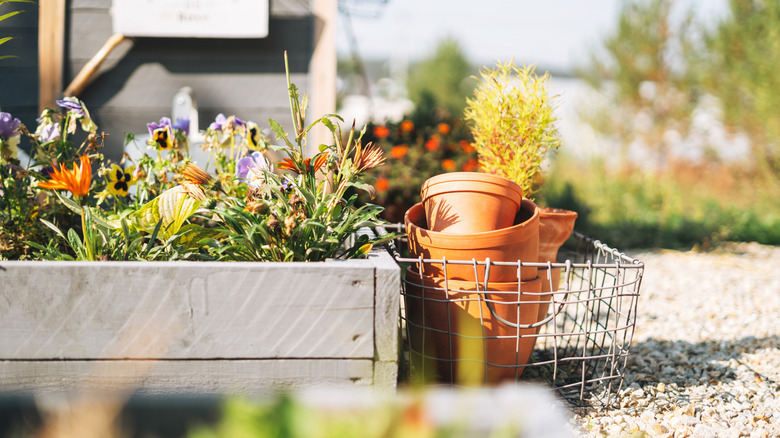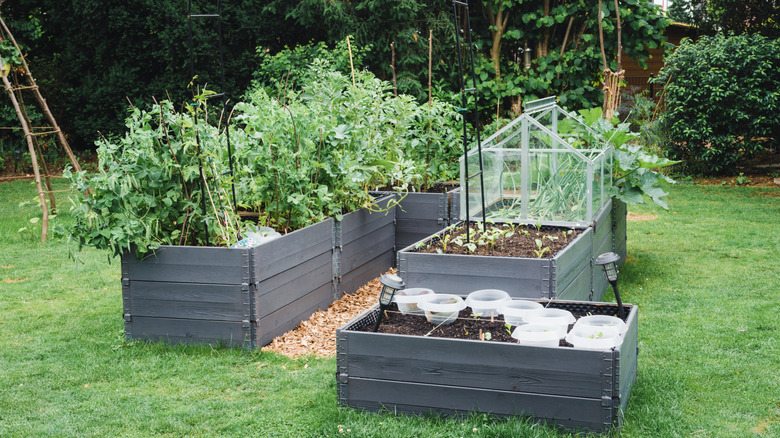How To Reuse Wooden Pallets For The Perfect Garden Spacing Every Time
Creating the perfect garden goes beyond planting and caring for your crops. It requires some hefty preparation work, from sourcing your material to building the raised beds. One of the biggest challenges is determining the ideal spacing for your plants, ensuring that it is both uniform and conducive to healthy growth. A simple, budget-friendly way to achieve even spacing is by using discarded wooden pallets to create raised garden beds. The uniform slats create a natural way to organize your crops, keeping them from growing into one another. With a bit of help from wooden pallets, you can create a charming organizational space for your plants that's functional and aesthetically pleasing.
So, what makes pallets such a versatile garden pick? Well, for starters, they are incredibly inexpensive. Many businesses discard their pallets after use, allowing you to pick them up for free. This makes them a prime candidate for some DIY repurposing, enabling you to upcycle pallets around your garden creatively. When it comes to gardening, pallets can be a prime pick to perfect the spacing of your vegetables and herbs. The slats naturally provide consistent spacing, making it easy to manage spacing without requiring precise measurements and cuts. With minimal effort, you can transform a discarded pallet into a stunning raised garden bed that enhances both the look and functionality of your outdoor space. This method is not only cost-effective, but it is also eco-friendly, turning a commonly discarded material into a stunning natural gardening solution.
Raised gardening made easy
The first step in creating a raised garden bed on a budget is choosing the right pallet. It may seem like an insignificant distinction, but it can drastically affect the outcome of your harvest. Most pallets are stamped with small symbols identifying the type of sterilization used on the wood. For gardening, you want to opt for pallets with all-natural treatments, for example heat — marked by HT. It is a non-toxic means of sterilizing the wood for shipping and the best option to limit contaminating your vegetables. Avoid any pallets that are marked with the symbols IPPC or MB, as both use harsh chemicals to treat the wood that can seep into your garden.
Once you've sourced the right pallets, it's time to start assembling your garden. If you want a small garden for fresh vegetables, you can opt for a single pallet and continually expand your garden in later planting seasons. For a larger garden, you can attach multiple pallets together using screws, dedicating each pallet to a different crop. You can also try leaving them separated to make space for a DIY garden path that fits any yard, allowing you to reach all sides of your planters. For extra stability, ensure your pallet is level before securing it into the ground with a couple of wooden stakes. Fill the beds with nutrient-rich soil, reaching between the slats and the corners — you can also utilize landscaping fabric that allows for drainage. Plant crops that don't need much room to grow, and watch as your garden thrives each year.

